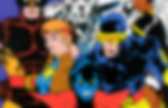

Eisner Awards FAQ | Comic-Con International: San Diego. What are the Eisner Awards? The Will Eisner Comic Industry Awards are considered the “Oscars” of the comics world. Named for the pioneering comics creator and graphic novelist Will Eisner, the awards are given out in more than two dozen categories during a ceremony each year at Comic-Con International: San Diego. How are the nominees selected? The nominees in each category are chosen by a blue-ribbon panel of judges who meet in San Diego in the spring of each year. Who selects the judges, and on what basis? The judging panel, which changes each year, consists of five or six people representing various aspects of the comics industry. How can works be submitted for consideration by the judges? In early January a Call for Entries is issued that specifies the process for submission and lists the expected categories.
What are the basic qualifications for submission? Printed works must have been distributed in the United States between January 1 and December 31 of the previous year. Nonfiction Graphic Novels: Give These to Fans of "March". These recent and upcoming graphic novels bring history and current events to life by telling important stories through the eyes of real people. This is the year of March: Book Three. The third volume in Congressman John Lewis’s graphic memoir of the civil rights movement, coauthored by Andrew Aydin and illustrated by Nate Powell, is the first graphic novel to win a National Book Award and is making all of the best-of-the-year lists. And deservedly so. All three volumes in the “March” trilogy are great reads for teens. The titles show what life was like in the Jim Crow South and how a determined group of activists mobilized to change the world.
While history can sometimes seem like a string of almost inevitable events, the “March” titles make clear that nothing was inevitable in the civil rights movement, and the authors vividly depict not just the passion of the organizers, but also their planning and preparation. In addition, March: Book Three is simply a dramatic story. WARNER, Andy. The Research Behind Graphic Novels and Young Learners | Northwestern Center for Talent Development. By Leslie Morrison, CTD Summer Leapfrog Coordinator Graphic novels have become a popular format in classrooms, partly due to their appeal to reluctant readers. More recently, a growing body of research, focused on how the brain processes the combination of images and text, indicates that graphic novels are also excellent resources for advanced learners.
When students read visual narratives, the activity in the brain is similar to how readers comprehend text-based sentences. However, when students learn to read graphic novels with an analytical eye, depth and complexity are added to the reading process. With graphic novels, students use text and images to make inferences and synthesize information, both of which are abstract and challenging skills for readers. Images, just like text, can be interpreted in many different ways, and can bring nuances to the meaning of the story. Graphic novels can also challenge students to think deeply about the elements of storytelling. Resources Barbee, M. In Defense of Graphic Novels and Those Who Read Them by Liesl Shurtliff. It happened at a school visit. I was between presentations, sitting in the library. A few students were quietly searching for books.
A boy, maybe nine or ten-years-old, came into my view, scanning the shelves. He seemed a bit lost and overwhelmed. “My own kids love that series,” I told him. Suddenly a teacher appeared from between bookshelves and shot me a withering glare. The boy’s shoulders slumped. This experience inspired me to include the following passage in the first book of my latest series, Time Castaways: The Mona Lisa Key. “I like comics,” he said. Wiley raised his eyebrows. My teacher,” said Corey. “Well with all due respect to your teacher, who I am sure is a fine educator, I disagree,” said Wiley. This passage has been shared and passed around online multiple times, usually with praise but sometimes with censure.
The animosity some adults have toward graphic novels is nothing new to me, and yet it continues to baffle me. Give them graphic novels and novels. Like this: Graphic Novels: Real Books for Real Readers. Stop Rushing Kids out of Graphic Novels. The books have been flying off our shelves once again in room 203. So many titles that barely get to rest for a moment before another eager set of hands attached to an even more eager reader grabs the book, so happy they finally got it. This book they have been waiting for, this book that everyone seems to be clamoring for. And while many books are receiving love this year, a few stand out above the rest; an entire format of books, as it has for several years now.
Guts by Raina Telgemeier Boy-Crazy Stacy (Babysitters Club 7) by Ann M. New Kid by Jerry Craft Best Friends by Shannon Hale Books that at a glance may seem easy, or not that challenging, after all, we all know to not call books easy by now, right? I often step back and simply marvel at the wonder of graphic novels and how they make so many kids reconnect with reading or connect with it for the very first time. “These books won’t teach you…” “These books will not challenge you…” “These books will not help you grow the way I hoped…”